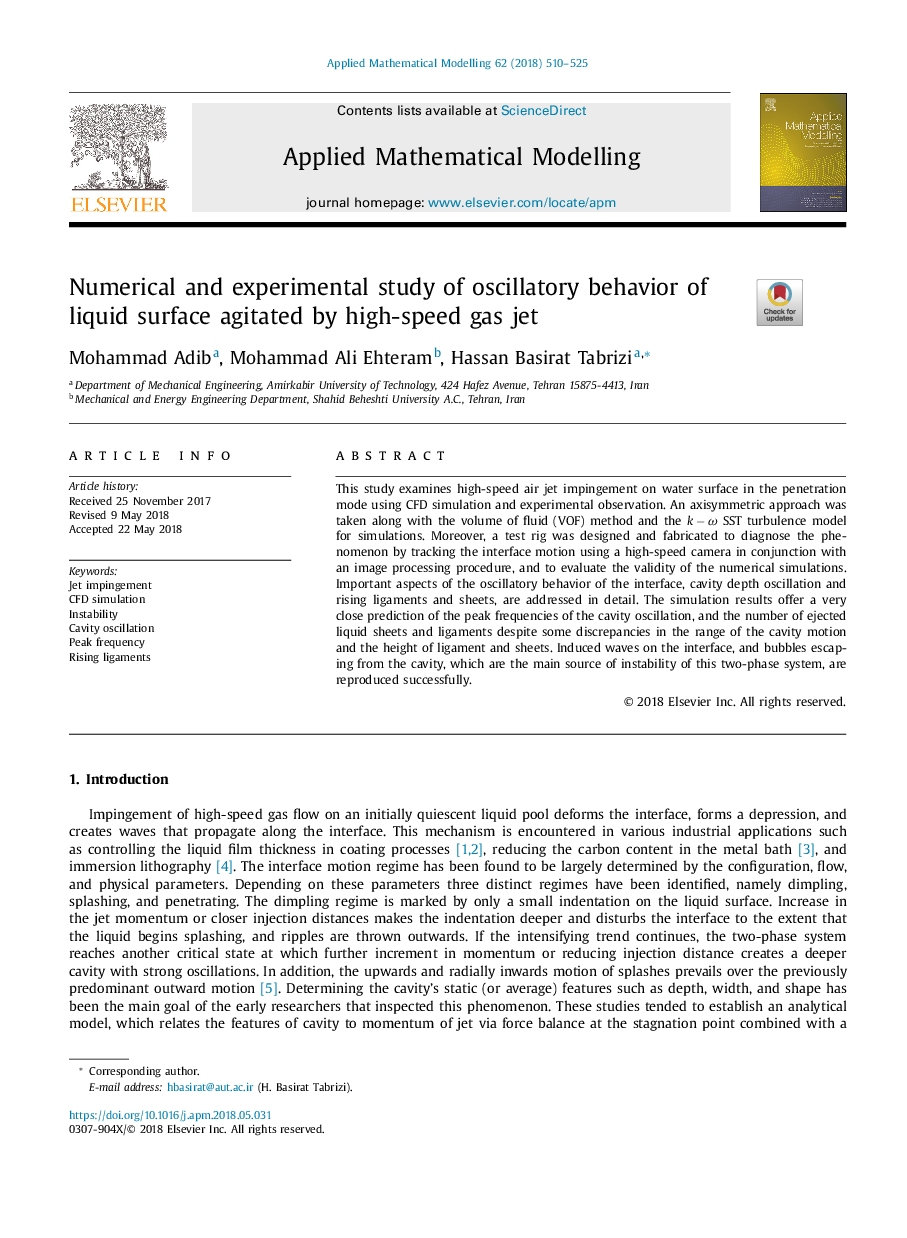| Article ID | Journal | Published Year | Pages | File Type |
|---|---|---|---|---|
| 8051089 | Applied Mathematical Modelling | 2018 | 16 Pages |
Abstract
This study examines high-speed air jet impingement on water surface in the penetration mode using CFD simulation and experimental observation. An axisymmetric approach was taken along with the volume of fluid (VOF) method and the kâÏ SST turbulence model for simulations. Moreover, a test rig was designed and fabricated to diagnose the phenomenon by tracking the interface motion using a high-speed camera in conjunction with an image processing procedure, and to evaluate the validity of the numerical simulations. Important aspects of the oscillatory behavior of the interface, cavity depth oscillation and rising ligaments and sheets, are addressed in detail. The simulation results offer a very close prediction of the peak frequencies of the cavity oscillation, and the number of ejected liquid sheets and ligaments despite some discrepancies in the range of the cavity motion and the height of ligament and sheets. Induced waves on the interface, and bubbles escaping from the cavity, which are the main source of instability of this two-phase system, are reproduced successfully.
Related Topics
Physical Sciences and Engineering
Engineering
Computational Mechanics
Authors
Mohammad Adib, Mohammad Ali Ehteram, Hassan Basirat Tabrizi,
